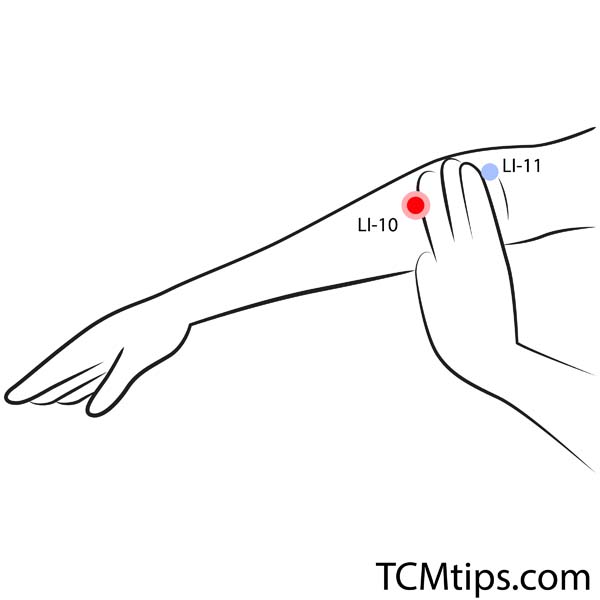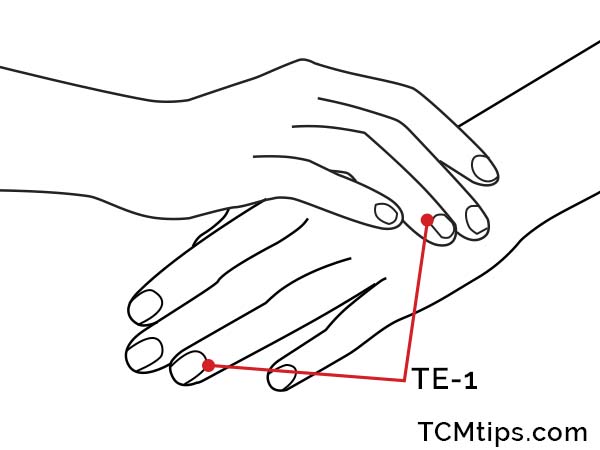Discover the Best Hand Pressure Points for Pain Relief
When it comes to managing pain naturally, Traditional Chinese Medicine (TCM) offers a wealth of techniques that can be both effective and easy to apply at home. Acupressure, a key component of TCM, involves applying pressure to specific points on the body to relieve pain and promote healing. Hand pressure points are particularly useful because they are easily accessible and can be stimulated anywhere, providing a convenient method for immediate pain relief. We consulted Ms. Mai Sogawa, a respected TCM Therapist from Japan, to identify the most effective hand pressure points for pain relief. You can learn more about Ms. Sogawa and her expertise on our about us page.
LI-4 (Hegu) for General Pain Relief

The LI-4 point, also known as Hegu, is located between the thumb and index finger, in the webbing. Pressing this point stimulates the large intestine meridian, helping to reduce pain by promoting the flow of qi (energy) throughout the body. This point is particularly effective for headaches, toothaches, and facial pain because it helps to unblock energy pathways that may be causing pain and tension. Additionally, LI-4 can strengthen the immune system and reduce inflammation by promoting circulation and reducing stagnation of qi and blood.
LI-10 (Shousanli) for Shoulder Pain

The LI-10 point, also known as Shousanli, is found on the outer side of the forearm, approximately three finger-widths below the elbow crease. Pressing this point alleviates shoulder pain and tension by enhancing the flow of qi through the arm and shoulder, reducing muscle stiffness and improving mobility. LI-10 also boosts the immune system and supports digestive health, indirectly aiding pain relief through improved overall well-being.
LI-4 (Hegu) and TE-1 (Guanchong) for Headache Relief


As previously mentioned, LI-4 is located between the thumb and index finger. The TE-1 point, also known as Guanchong, is located on the little finger, just above the nail on the outside edge. LI-4 helps relieve tension headaches and migraines by releasing built-up tension in the head and neck area, while TE-1 targets frontal and temporal headaches due to its connection with the triple energizer meridian, which balances the body’s energy and reduces pain. Combining LI-4 and TE-1 provides comprehensive headache relief by addressing different aspects of the pain.
Yaotongxue for Lower Back Pain

Yaotongxue points are found on the back of the hand, in the grooves between the second and third, and the fourth and fifth metacarpal bones. Pressing these points provides significant relief from acute lower back pain by influencing the flow of energy along the spine, releasing tension and stiffness in the lower back area. Improved circulation and reduced energy blockages help alleviate pain and promote healing. Activating these points also promotes relaxation and enhances overall circulation, reducing pain sensation and speeding up recovery.
Why Hand Pressure Points Work
Hand pressure points are beneficial for pain relief due to their accessibility and ease of use. They allow individuals to perform acupressure on themselves without the need for specialized equipment or professional assistance. This can be especially valuable for quick pain relief in situations where other treatments might not be available. Additionally, hand pressure points can be stimulated discreetly, making it possible to manage pain even in public or during daily activities. Acupressure is a non-invasive technique, meaning it does not involve needles or surgical procedures, making it safe and gentle for people of all ages. Pressing hand pressure points also promotes relaxation and reduces stress, which is beneficial for overall mental and emotional well-being.
Tips for Effective Acupressure
Regularly applying pressure to these points can yield better results over time, making it a part of your daily routine to manage chronic pain. Deep breathing enhances the effectiveness of acupressure, so inhale deeply through the nose and exhale through the mouth while applying pressure. Staying hydrated helps to flush toxins from your system, aiding in pain relief, so drink plenty of water before and after acupressure sessions.
Conclusion
Hand pressure points offer a simple yet powerful way to manage pain without the need for medication. By integrating these techniques into your daily routine, you can experience significant relief from various types of pain. Remember to consult with a healthcare professional if you have any underlying conditions or if pain persists.

Try our Anti-Aging Gua Sha Tool designed to bring out your skin’s natural glow.
Best Gua Sha Product- Anti-Aging: The tool is designed to target 11 specific aging signs such as wrinkles and sagging skin. By following the 7-step routine, users can improve skin firmness and reduce fine lines naturally.
- Enhances Skincare Routine: It works effectively with serums and lotions, boosting absorption and efficacy of skincare products.
- Visible Skin Improvement: Users can expect a smoother complexion, reduced puffiness, and a more youthful appearance.
 P. Sze
P. Sze 


















